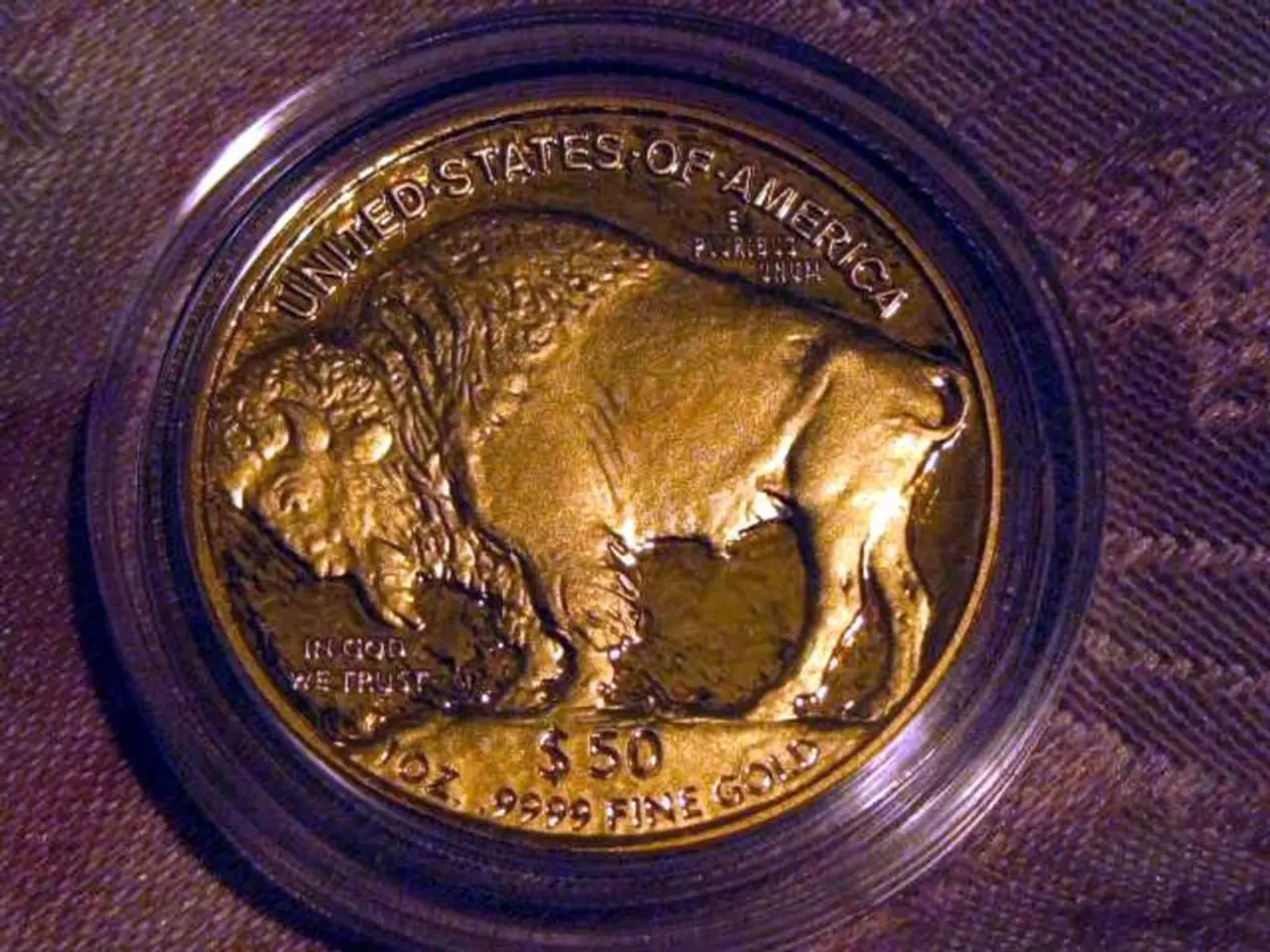Financial Analysis Primer: Trace the Funds
In the world of economics, the relationship between gold prices and money supply has long been a subject of interest. A 2020 regression study found that a 1% increase in the money supply, as managed by the Federal Reserve, corresponds to a 0.94% rise in gold prices.
This relationship is further supported by a 2023 academic paper that confirms a long-term relationship between gold prices and US M2. However, the authors of Austrian School for Investors (2015) note that gold does not necessarily correlate with the rate of inflation itself, but with the rate of change of the inflation rate.
Gold, an asset with a price determined in a 24/7/365 global auction, most often quoted per troy ounce, in the world's reserve currency of US dollars, is still a shadow currency to fiat ones, even after the end of the gold standard in 1971 and the legalization of gold investment in 1974.
The data supporting these claims can be found on OpenSecrets, a 501(c)3 organization that tracks money in US politics. The annual M1 and M3 money supply from 1960 to 2024 can be sourced from the OECD. M1 includes paper and coin currency held by the general public as well as liquid bank deposits (e.g. checking accounts), while M3 includes M1, plus less liquid bank deposits (e.g. savings accounts) as well as "repos."
Interestingly, since 2016, political donations from those at the Fed have been skewed towards Democrats, with donations ranging between 92 to 93 percent for Democrats and 8 to 9 percent for Republicans. However, it's important to note that there is no clear information in the search results about which political party has received the most donations from Federal Reserve employees from 2016 to the present.
The article also mentions a blog post titled Wokenomics 101 (2023) by Darren Brady Nelson, who is the chief economist with Fisher Liberty Gold and a policy advisor to The Heartland Institute. Nelson, who previously was economic advisor to Australian Senator Malcolm Roberts, authored the Ten Principles of Regulation and Reform, and the CPI-X approach to budget cuts.
In 2019, gold had a 150 percent lead on M1 and 92 percent on M3. However, by 2022, gold's performance against M1 and M3 decreased significantly, shrinking to -110 percent and 80 percent respectively.
The Bank of England wrote in Money Creation in the Modern Economy (2014) that bank lending creates deposits, and new money is created at the stroke of bankers' pens. This underscores the assertion that money supply is the inflation source, precisely because it is fiat currency.
It's worth noting that a post on X claims that nearly all political donations by Fed employees go to one party, but this claim could not be verified at the time of writing. The chart shows cumulative annual growth of gold versus M1 and M3 from 1974 to 2019, with gold performing and protecting against both M1 and M3.
In conclusion, the relationship between gold prices and money supply is complex and multifaceted, with gold often recognised as an inflation hedge in the long run, driven by fear and uncertainty. Further research and analysis are needed to fully understand this relationship.






